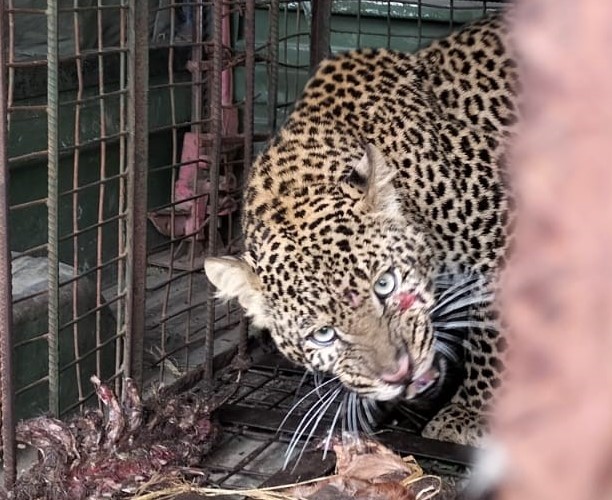
 Leopard inside a cage [KWS/COURTESY]
Leopard inside a cage [KWS/COURTESY]A tragic incident unfolded at the Jerusalem Biblical Zoo, Israel, after a leopard escaped its enclosure and fatally attacked a zoo employee.
According to dailymail.co.uk, the victim, identified as 36-year-old Uriel Nuri, was reportedly preparing for a behind-the-scenes tour for visitors when the big cat pounced.
Local media reports narrate that the leopard managed to break free from its designated habitat and made its way to an inner courtyard, where the fatal attack occurred.
The zoo has since confirmed the sequence of events in a public statement.
“During a routine activity to prepare food for the leopards, which took place as part of a behind-the-scenes tour for visitors of the zoo, a leopard managed to escape from the leopard house into the inner courtyard and attacked one of the zoo employees,” the statement read.
Reports add that emergency teams responded promptly, and Nuri was rushed in critical condition to Hadassah-University Medical Centre in Ein Kerem.
Despite undergoing life-saving treatment, including CPR, hospital staff later pronounced him dead due to severe injuries sustained, particularly to the neck and upper body.
“I ran over and saw a man lying unconscious, with significant injuries to his neck. We immediately attempted to stop the bleeding, and very quickly, another team arrived,” a paramedic told the Jerusalem Post.
The zoo further clarified that no visitors were at risk during the incident.
“At no point was there any physical danger to the visitors, who were protected behind a glass window,” the statement said.
Authorities have since launched an investigation into how the leopard breached its enclosure.
Police officers were seen entering the animal’s habitat as part of the probe.
This incident comes less than a year after a similar tragedy at the same zoo, where a crocodile escaped and attacked a staff member.
In that case, the 45-year-old employee was sedated and rushed to intensive care, while the animal was shot dead by a security guard who witnessed the attack.
With the two fatal incidents, questions are now mounting over the effectiveness of existing safety protocols.












